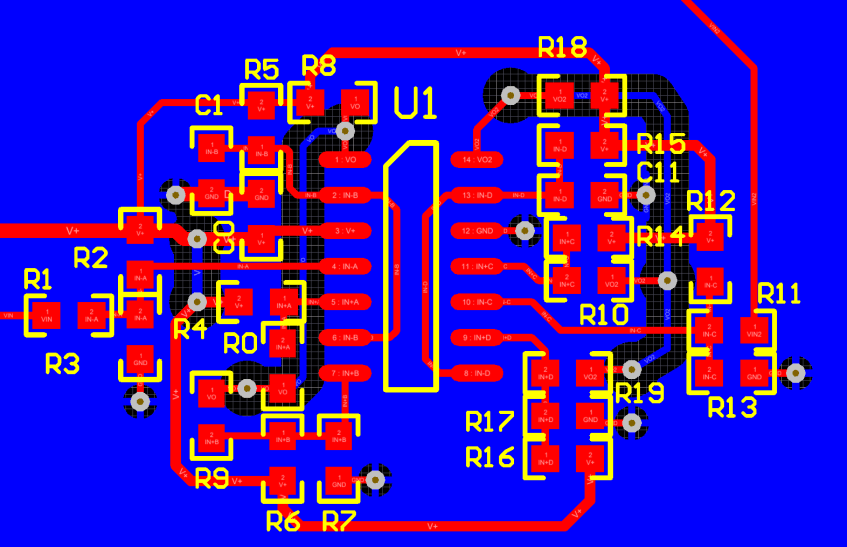JAJSDE4 June 2017 LM339-MIL
PRODUCTION DATA.
10 Layout
10.1 Layout Guidelines
Try to minimize parasitic impedances on the inputs to avoid oscillation. Any positive feedback used as hysteresis should place the feedback components as close as possible to the input pins. Ensure that the output pins do not couple to the inputs which can occur through capacitive coupling if the traces are too close and lead to oscillations on the output.
The optimum bypass capacitor placement is closest to the V+ and ground pins. Minimize the loop area formed by the bypass capacitor connection between V+ and ground. The ground pin should be connected to the PCB ground plane at the pin of the device. The feedback components should be placed as close to the device as possible minimizing strays.
10.2 Layout Example
 Figure 33. Layout Example
Figure 33. Layout Example